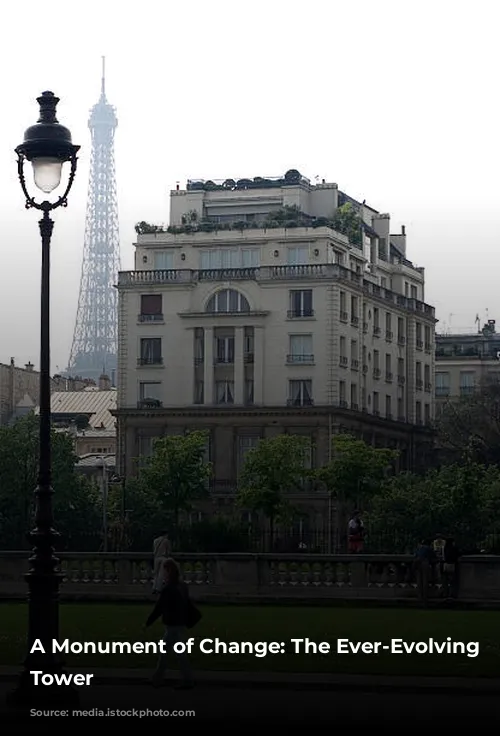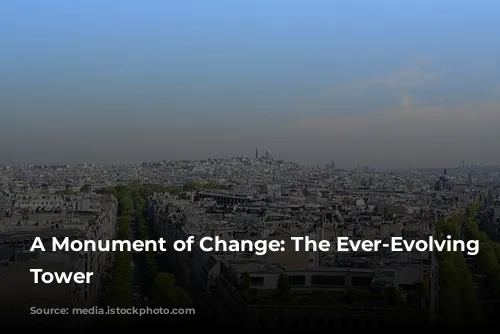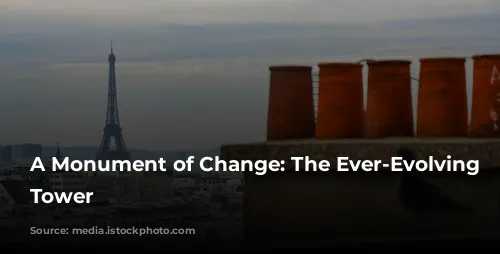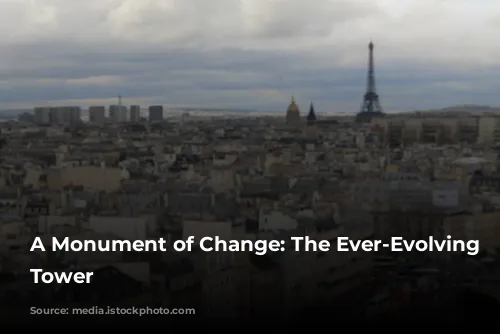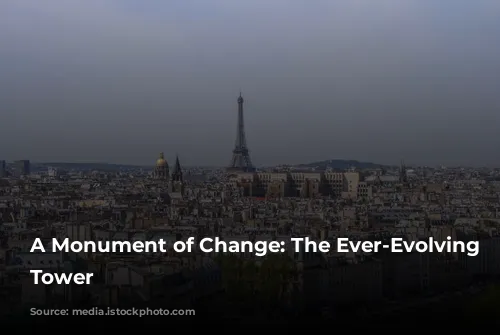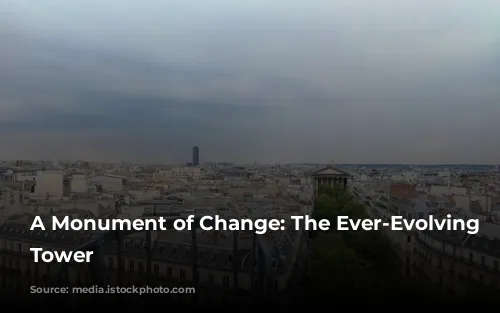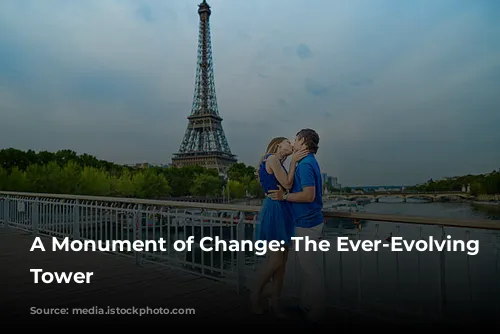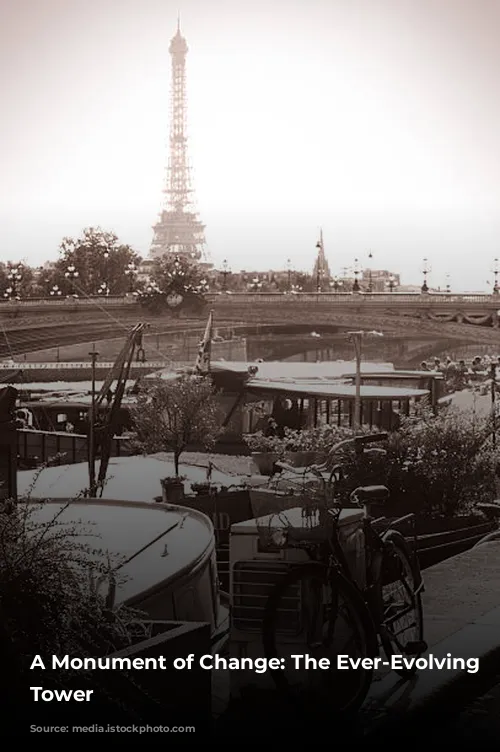The iconic Eiffel Tower, a symbol of Paris and a global landmark, hasn’t always looked the way it does today. Its journey is one of constant evolution, reflecting the changing times and the city’s vibrant spirit. Let’s delve into some of the tower’s most significant transformations.
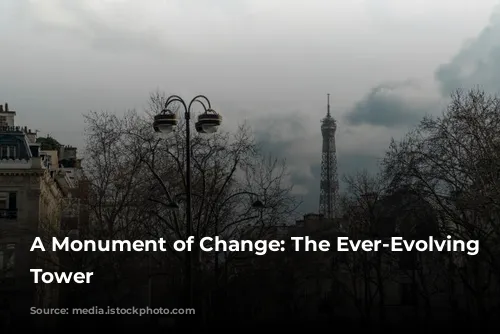
From Its Humble Beginnings to a Global Icon
The Eiffel Tower’s story began in 1887, born out of a competition to create a spectacular centerpiece for the 1889 Universal Exhibition in Paris. Gustave Eiffel, a renowned engineer, won with his visionary design for a towering structure of puddled iron, inspired by the viaducts his company built. The “300-meter tower”, as it was originally called, was a marvel of engineering, pushing the limits of construction at the time.
Construction commenced in 1888, and the first platform was laid, marking the start of this monumental undertaking. However, delays and unforeseen challenges stretched the construction process beyond the initial 12-month plan, pushing the inauguration back a year.
Finally, in 1889, the Eiffel Tower stood tall, greeting visitors to the World’s Fair. The tower, the tallest structure in the world at the time, offered breathtaking views of Paris, drawing nearly 2 million visitors. Inside Gustave Eiffel’s office, situated at the tower’s pinnacle, he hosted numerous dignitaries and luminaries during the six-month fair.
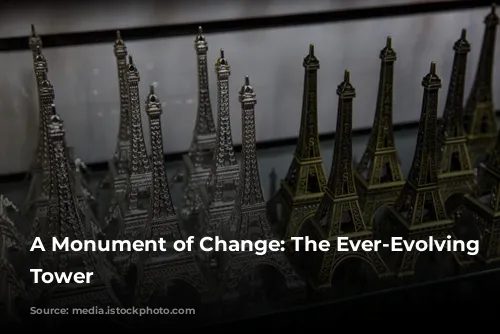
A Tower Reimagined: Modernization and Innovation
Despite the initial enthusiasm, the Eiffel Tower faced a period of uncertainty. Although it housed restaurants and hosted various events, its popularity waned. This spurred a renovation project for the 1900 World’s Fair, aiming to give the tower a more modern look and increased capacity. Stephen Sauvestre’s design, a bolder, more contemporary aesthetic, ultimately didn’t come to fruition. However, Eiffel embraced the spirit of modernization, making significant improvements to the tower. The floors were expanded, elevators received upgrades to double their capacity, and gas lighting was replaced with a fully electric system.
Fernand Jacopozzi, a visionary electrical engineer, recognized the Eiffel Tower’s potential as a canvas for light. His innovative lighting design, financed by the Citroen company, transformed the tower into a dazzling beacon in 1925. This spectacular illumination, a testament to the power of light and innovation, continued annually until 1935.
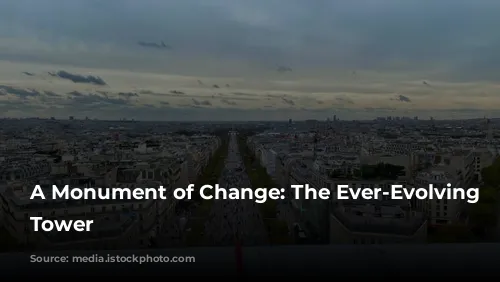
A Tower of Communication: Beyond Its Architectural Significance
The Eiffel Tower evolved beyond its architectural beauty to embrace a new role: a communication hub. In 1935, the tower’s powerful transmitter began broadcasting animated images, showcasing the technological advancements of the time. During World War II, the tower faced a threat of demolition, but Kurt Hinzmann, a German propaganda official, recognized its strategic value. Instead, he advocated for its use as a communication tool, modernizing its antenna system to broadcast German programs. Following the war, the ORTF (French Radio and Television Office) established studios atop the tower, further cementing its importance as a vital communication center.
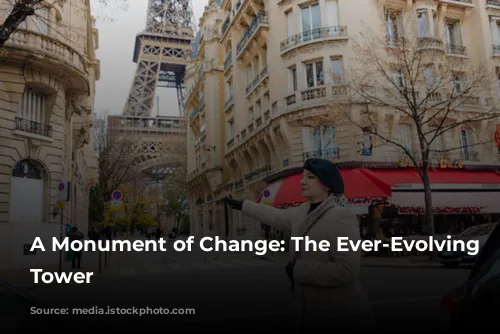
Celebrating the Eiffel Tower’s Legacy: A Century of Evolution
The Eiffel Tower’s 100th anniversary in 1989 was a grand affair, featuring an extravagant ball with renowned artists and dignitaries. The celebration was a testament to the tower’s lasting impact, marked by a dazzling new lighting scheme that accentuated its silhouette and illuminated the Parisian skyline.
As the millennium approached, the Eiffel Tower played host to a captivating countdown on a massive screen, synchronized with 20,000 light bulbs and a spectacular pyrotechnic show. The year 2000 also saw the introduction of the tower’s signature twinkling beacon, now a nightly spectacle that illuminates the Parisian night.
The Eiffel Tower continues to evolve, embracing new technologies and artistic collaborations. Motoko Ishii, renowned lighting designer, created a captivating light show for the tower in 2018, showcasing Japan’s rich cultural heritage. The monument was adorned with vibrant colors, transforming it into a canvas for video projection, a testament to the tower’s versatility as an artistic platform.
In 2008, the European flag graced the tower, a symbol of unity and shared values. This symbolic gesture was repeated in 2021-2022, signifying France’s presidency of the Council of the European Union.

A Timeless Symbol: The Eiffel Tower’s Enduring Appeal
The Eiffel Tower is more than just a structure; it’s a living symbol of Paris and a monument to human ingenuity. Its journey, marked by innovation, adaptation, and celebration, reflects the city’s dynamic spirit and its enduring fascination with progress. From its construction to its ever-evolving presence, the Eiffel Tower continues to captivate the world, a testament to its timeless allure and its enduring legacy as a global icon.
